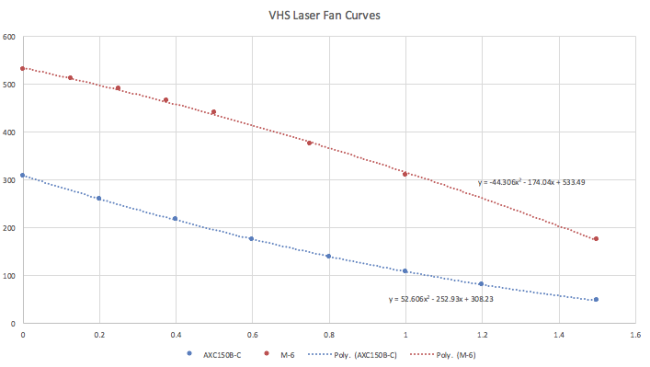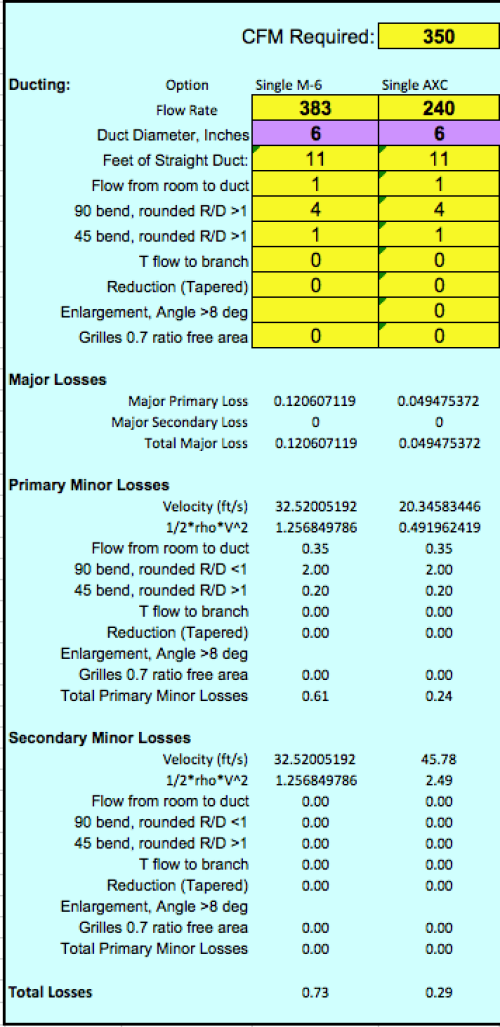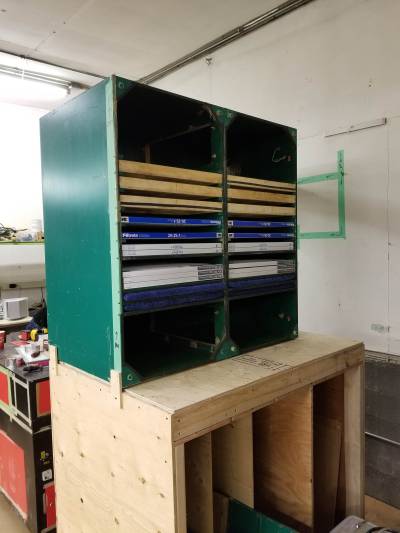Table of Contents
Laser Filtration System
It is well understood that depending on the material being “lased” that the fumes from a laser cutter can be detrimental to human health, either through the release of particulates, or volatile organic compounds (VOCs). (reference: Download PDF) In particular, wood creates a significant amount of small particulate matter, while most plastics create various VOCs that must be removed from the exhaust stream before it is ducted either inside or outside the space.
Many commercial systems exist in order to address these concerns, and in general follow the same design principles:
- Utilize sufficient air flow to clear the space, while keeping the filter and laser under negative pressure.
- Have a staged filter setup to remove various substances consisting of:
- Pre-filtration - remove large particles using a larger bag filter, washable medium, or cheap pre-filter.
- Small Particle Filtration - HEPA filters or equivalent can be used to remove the majority of smaller particles generated by the laser/material.
- VOC Removal - Although various methods for VOC removal exist, the most common is utilizing an activated carbon bed to remove any final VOCs
- Post Filter (Optional) - If concerns regarding the expulsion of carbon dust from the bed exist, such as a re circulation application,
- Use of sensors/monitoring to determine service intervals/efficacy.
VHS has a custom build design which incorporates all of these elements, and is flexible in order to pursue upgrades in the future as necessary.
Air Flow Requirements
For an 80W CO2 laser such as that of VHS, the suggested minimum flow rate is 250cfm. In order to meet these requirements, a target setpoint of 350cfm was used. To meet this spec, two axial fans original designed for hydroponic applications were investigated. The fan curves are below:


Given the 6' ducting, and required filters, the major and minor Dp's were calculated and compared to the available fan curves. This determined that the optimum setup was a single M6 fan with minimal other backpressure as seen below:
Filter Setup
In most cases, a prefilter, bagfilter, HEPA filter is the preferred option. This provides the longest lasting filter media for this application of the systems reviewed. However VHS has a modular setup that is arranged to accept standard 20“x25” furnace filters. Therefore the arrangement above was created using:
- 2x reusable/washable plastic prefilters to capture large particles entrained in the flow from the laster
- 4x Filtrete 1900 MPR 1900 “Maximum Allergen Filtrete Furnace Filters” (Can be replaced by a single deep pleat MERV 14 or higher commercial filter as necessary).
- 6x trays of 1“ Jacobi Ecosorb GXB Activated Carbon (or equivilant)
This system is designed to: a) reduce particulate entrapment in the fine particulate phase, b) ensure removal of particulate matter which is roughly similar to tobacco smoke as per literature on laser exhaust, and c) have sufficient residence time of the air in the carbon bed, while not increasing the overall dP of the filter system.
According to literature from the EPA (Download PDF) it is suggested to use a minimum bed depth of 3”, along with face velocities of between 50-100 fpm to reduce streaming and breakthrough, while providing sufficient residence time. It should be noted that in this setup, the number of trays and flow area has been maximized in order to lower dP, and increase residence time. At the specified 350 cfm, and the 1/2 filter box area currently in use, the residence time in the current design is approximately 0.3s.
The current filter setup is shown below:
Filter Maintenance
For the most part, the filter should be monitored using the dP, particulate, and VOC sensors, as well as by the operator to ensure proper operation. As an initial starting point (depending on usage), it is recommended to:
- Wash the pre-filters once per week
- Replace the first particulate filter each month, and add a new one at the top of the stack (~$25)
- Replace the bottom carbon bed once it has doubled in weight, adding a new bed at the top of the stack (~$30)
Testing
The filter has been tested and will be continuously monitored by the control system to ensure:
- Min 300 cfm across the fan
- Max dP across the bed
- No VOC breakthrough
- No particulate breakthrough
At any time if there is a concern over filter operation or maintenance, please call the space at (778) 330-1234, or contact any member of the LCC and take the laser offline for further use.

